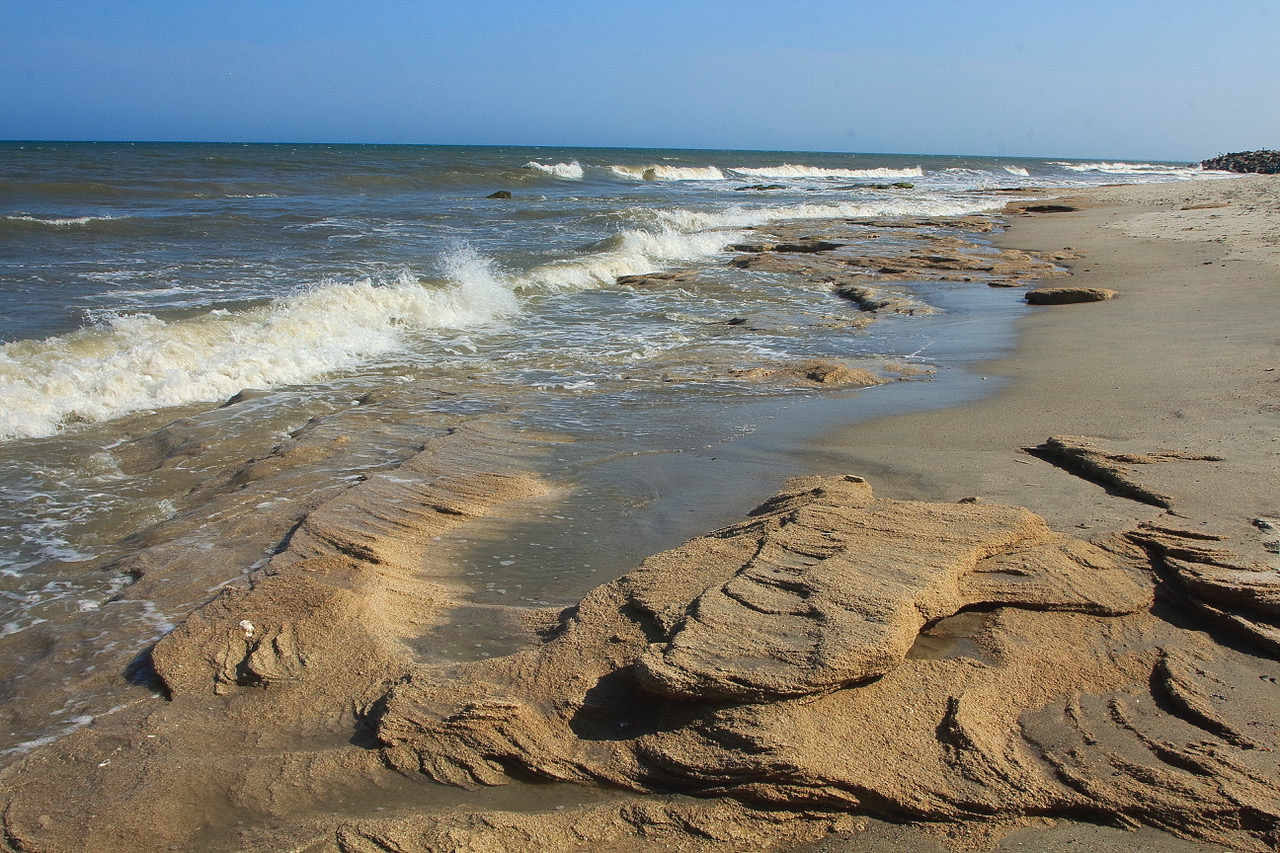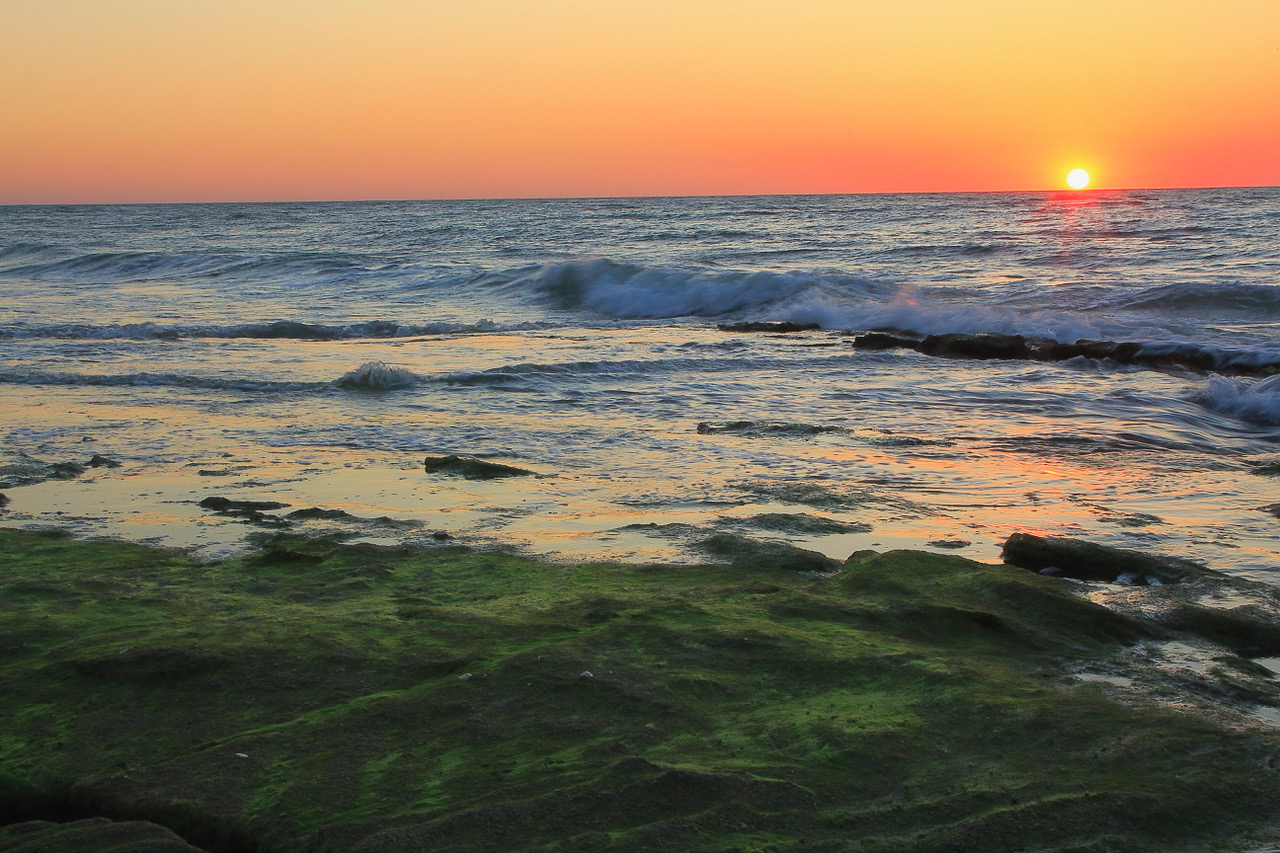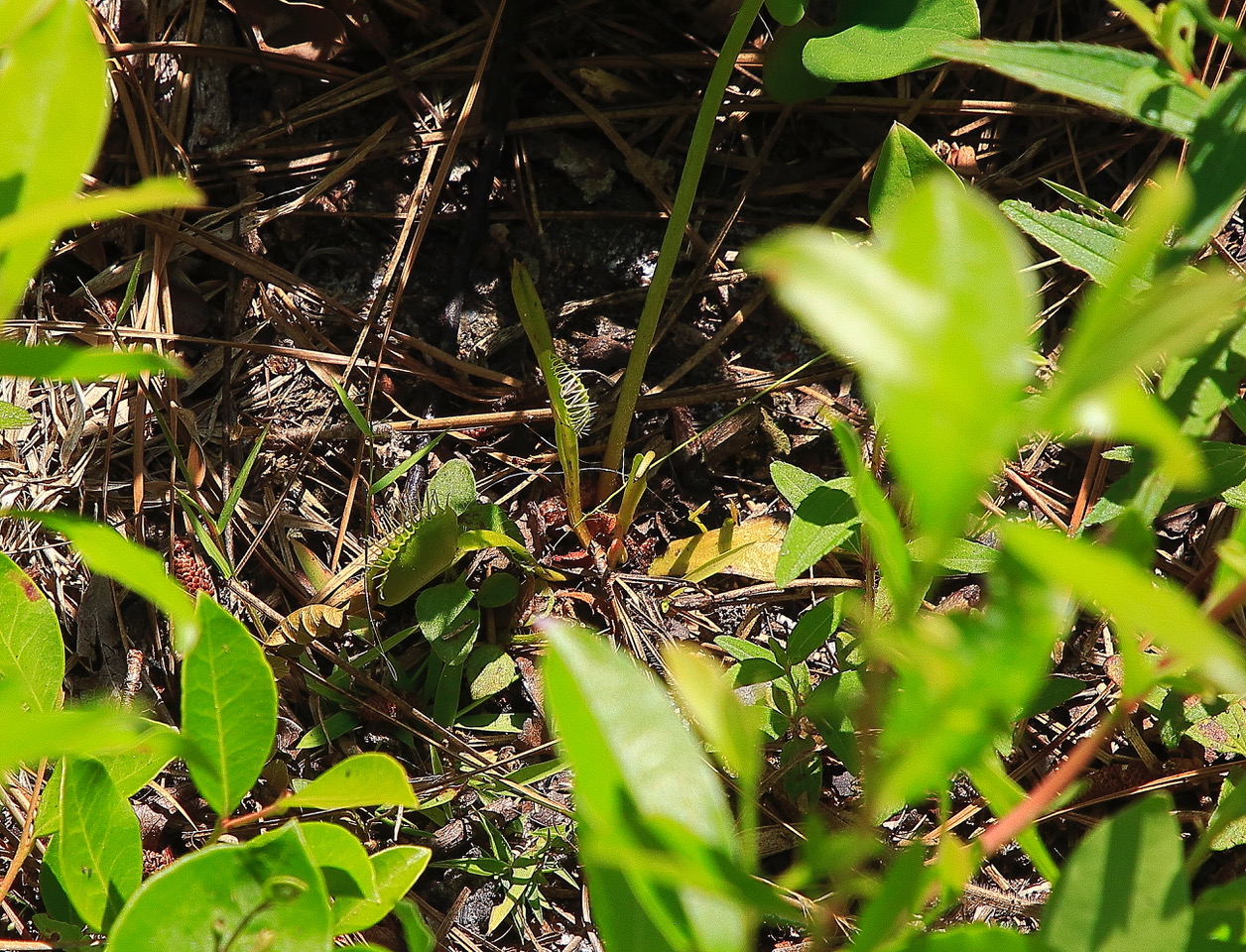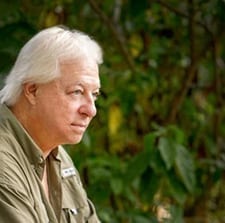A Coquina Sunrise
August 8, 2024By Tom Poland
And Carnivorous Plants
At first I thought men had poured cement onto the beach. Protection against an encroaching sea, I figured. The waves had scoured it good, brushing tresses into it. I walked south a ways, shaking my head as to how man tries to harness nature. Then I saw rocks jutting from the waves, not cement, but rocks. At once I thought of Acadia National Park up Maine way. I made a mental note to come back when sunrise and low tide concurred. And it lifted my spirits knowing I hadn’t seen cement.
When I got back to our beach house, I did some internet sleuthing. I discovered that the rocks are coquina, a form of limestone. No cement, thank goodness, something rare instead. The credit goes to ancient mollusks, clams, and other shell-building creatures for this sedimentary rock of calcite. Over time liquefied calcium carbonate glues shell fragments together. Sand gets in on the act. Coral too. Look closely with some magnification and you’ll see tiny shells and sand glued together. All in all, it brings tabby to mind, that man-made form of coquina Spanish settlers concocted from burnt oyster shells’ lime, which they mixed with water, sand, ash, and broken oyster shells.

Daylight at low tide some of the coquina resembles cement.
And where might I have been? Kure Beach in New Hanover County, a short ways south of Wilmington, North Carolina, home of yesteryears’ beloved newscaster, David Brinkley.
Later in the day, low tide revealed other ridges and upthrust rocks covered in fluorescent green, an emerald form of moss that glows as if radioactive. If you go, know that you can only see this rare outcropping during low tide. At high tide it disappears.
Estimates place it origin as being from 12,000 to 80,000 years ago, but it must be much older. This natural wonder is the only rock formation on the coast of North Carolina. It’s not far from Fort Fisher, which kept North Carolina’s port of Wilmington open to blockade-runners for a while during the Civil War.

At low tide at sunrise the moss-covered coquina resembles an aerial photo of ridges.
I went back at sunrise two times. The first time the tide was much higher than I expected, but I noticed something interesting. Pelican and shore birds were working the rocks pretty good. Small fish congregate around a bit of structure, as fishermen call it. When the waves cover the rocks, it’s dinnertime. The predators come calling. Nowhere else were the birds congregating and diving as they were around the rocks. I watched a persistent laughing gull harass a pelican trying to make off with its catch.
As for the perfect photo conditions, low tide and sunrise never aligned. With apologies to the Eagles, I went back for another coquina sunrise. This second time sunrise was two hours past low tide. Even so the rocks’ green covering brought a rare burst of emerald to a beach setting. In places it dripped from the rocks, tentacles of green that brought melting candle wax to mind.

The Venus flytrap is small but deadly.
I can’t say with authority, but I don’t believe South Carolina and Georgia have coquina outcrops along their seashore. Florida, however, does. You’ll find it at Washington Oaks Garden State Park near Palm Coast, Florida. It’s about 30 miles south of St. Augustine.
I spent a week at the beach with my daughter, Beth, and her family, and we made it a good time, with explorations into the natural world. In addition to the rare outcropping of coquina, we found Venus flytraps and pitcher plants. Venus flytraps grow in longleaf pine habitats in the coastal plain and sandhills of North and South Carolina. You won’t find them anywhere else in the world. And you’ll be hard pressed to find coquina outcrops along our Southeastern shore unless you head to Kure Beach and the Palm Coast.
Georgia native Tom Poland writes a weekly column about the South, its people, traditions, lifestyle, and culture and speaks frequently to groups in the South. Governor Henry McMaster conferred the Order of the Palmetto upon Tom, South Carolina’s highest civilian honor, stating, “His work is exceptional to the state.” Poland’s work appears in books, magazines, journals, and newspapers throughout the South.
Visit Tom’s website at www.tompoland.net
Email him at [email protected]




















